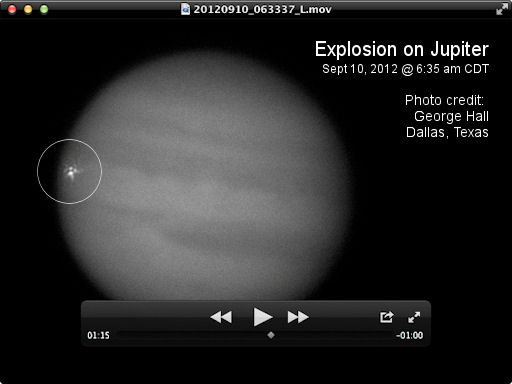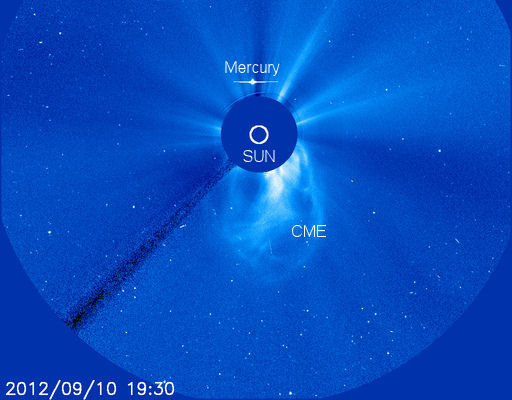2012 QC8 is even bigger, about 1.1 km in diameter, hailing from the vicinity of Jupiter; it will pass about 8.7 million km (22.7 lunar distances) from Earth. Astronomers monitoring the incoming space rocks say they are glowing like 14th to 15th magnitude stars, which makes them good targets for advanced amateur telescopes. Ephemerides: 2012 QG42, 2012 QC8.
Astronomers around the world will now begin monitoring the impact site for signs of debris--either the cindery remains of the impactor or material dredged up from beneath Jupiter's cloud tops. Some impacts do produce such debris, while others don't. Researchers aren't sure why; perhaps this event will provide some clues.
SOLAR CONJUNCTION OF MERCURY: An astronomical conjunction is underway this week--but don't bother looking up because it is hidden in broad daylight. Mercury is passing only a degree and a half from the sun. Using an opaque disk to block the sun's glare, the Solar and Heliospheric Observatory (SOHO) took this picture of the close encounter on Sept. 10th:


 RSS Feed
RSS Feed